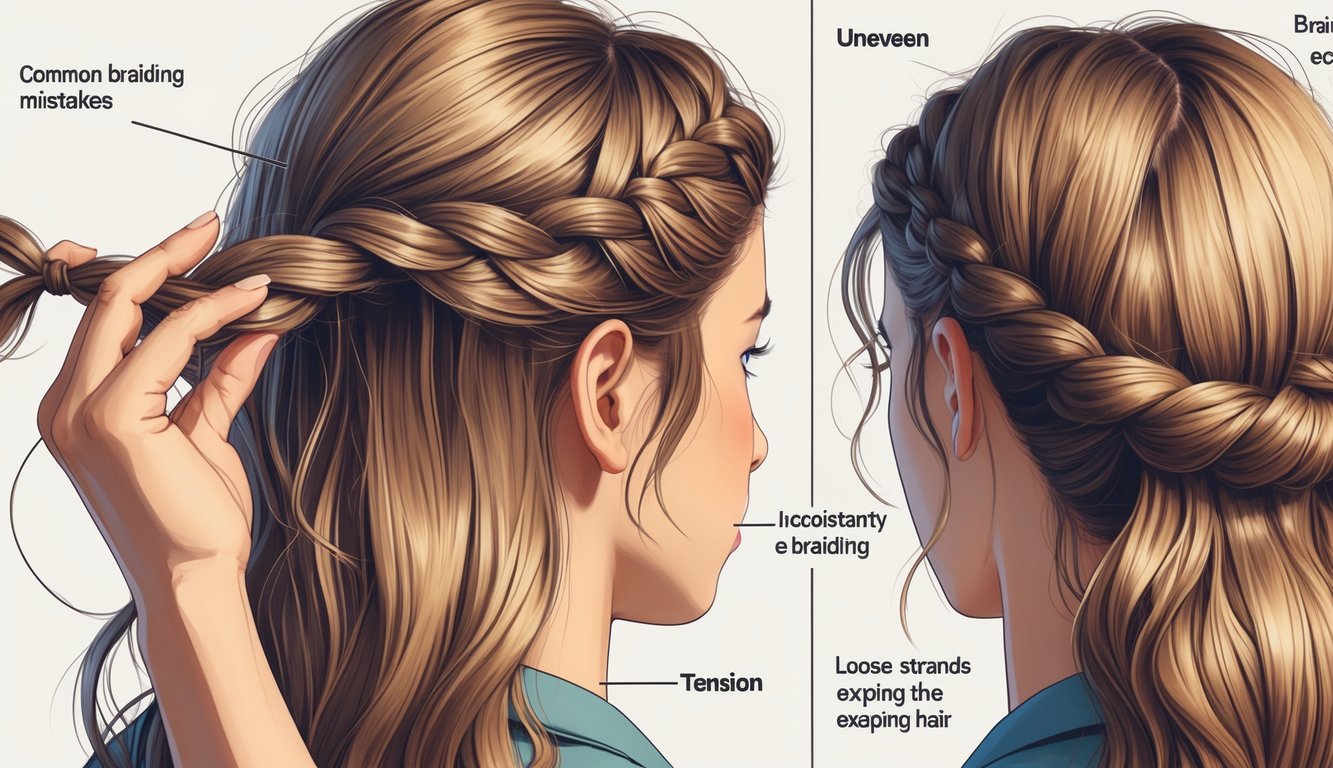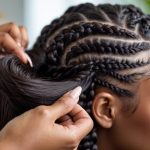
Perfecting the Fishtail Braid
Fishtailing with rings on? Nope. Nobody warns you, but those rings yank out baby hairs—tiny, painful, why am I even wearing jewelry for this? Scroll through Instagram and every “expert” is like, “Just split your hair in two, cross small outside pieces, voilà!” Right. My hands sweat after 30 seconds, and suddenly one side’s a fat rope and the other’s a limp noodle.
HairstyleTalk and every other blog love to say the fishtail braid is impossible if your hair’s too slippery. I blast it with dry texture spray (never regular hairspray, unless you like sticky helmet hair). Some pro somewhere said to use cornstarch on your fingers. I tried it. Felt weird. Smelled weirder. If you’re allergic, skip it. Alternating those two main strands at the nape? My arms scream. But if I drop my elbows—like, let them hang—my hands stop cramping. Why don’t tutorials mention that?
Sections uneven? Don’t panic in the middle. Just tug at the edges with a rat tail comb at the end, not your fingers, unless you want frizz city. Every time I start too tight at the scalp, it ends up stubby and matted. Looser at the base actually looks better, especially if you want to “pancake” it out for volume. Which, let’s be honest, I always do.
Achieving a Flawless Waterfall Braid
Symmetry? No. Waterfall braids are basically a test of how many arms you wish you had. Pinterest is full of lies—those even layers are sorcery. I tried nine times to get the “strand over, drop one, pick up new” thing down the side of my head without bald spots. Turns out, wrist angle is everything: keep them up, pull forward, not back. Why is this so hard?
Double mirrors? Useless. I end up juggling them and poking my own eye. Stylists say to use clear micro elastics for the dropped bits, but sometimes I just curl them with my finger and pretend it’s intentional. Is that cheating? Probably.
Biggest failure: using gel instead of mousse. Gel makes it crunchy and sad. Layers sticking out? Hide them with a bobby pin inside the braid, pointy end up. Nobody sees it. And honestly, a little messiness makes the waterfall braid look less try-hard. I just pretend I wanted it that way.
Using Hair Extensions in Braids the Right Way
I’ve fought more hair extension disasters than I want to admit. Worst was grabbing the wrong set and shoving them in, then just sitting there yanking at lumps like, “Why do I do this to myself?” There’s no magic trick—just annoying little details that everyone forgets until it’s too late.
Choosing Suitable Extensions
Why do people keep buying neon plastic hair for box braids, then act shocked when it looks like a Halloween wig? I stopped buying extensions online unless I could touch them first—if it’s waxy, I’m out. A stylist at Panache once looked at my cheap pack and just said, “Match the texture or don’t bother.” Rethought my whole approach in that moment.
Price doesn’t mean quality. Sometimes expensive just means softer, not better. If your scalp hates everything, go with human hair or at least hypoallergenic synthetic. The “one bundle fits all” stuff from the bargain bin? Regret. The Panache Hair Salon guide says get extensions a little longer than you think—braiding eats up length. Double-check the weft width, too. Too thick and you look like you’re hiding a squirrel under there.
Blending Extensions Seamlessly
Seamless? I used to think I could just slap extensions under a top layer and nobody would notice. Wrong. My friend pointed out a weft at dinner and I wanted to melt into the floor. You have to section like you’re prepping for surgery: part, add a tiny bit of extension, sandwich it between your own hair. It’s like building a tiny, stubborn taco.
Don’t jam them all in one row. I did that. Migraine city. And the braid looked like a lopsided log. Tension matters—too tight and your scalp screams, too loose and they fall out by lunch. The Honest Hair Factory guide says trim the blunt ends or it’ll look like a craft project gone wrong.
Now I mist with water or leave-in spray, then finger-comb to blend the joint. Underrated move. Want to see if it worked? Take a flash selfie. If you see lines or plastic shine, nope, start over.
Protective Styles and Long-Term Hair Health
You ever chase the “protective style” dream so hard you forget hair health is still a thing? I have. Dry scalp, split ends, and the myth that a wig cap solves everything—sometimes I feel like I need an advanced degree to keep up.
Maintaining Healthy Hair Between Braids
Dry shampoo, edge control, random oils—my bathroom is chaos and still, people treat protective styles like a “set it and forget it” crockpot. My trichologist yelled at me once: “Moisturize weekly or forget about growth.” Aloe vera juice in a spray bottle works. Flakes? Use a gentle scalp cleanser, not some crusty old clarifier.
I keep telling everyone—don’t skip detangling before re-braiding. Little knots turn into split ends fast. Start with fingers, then a wide-tooth comb, then moisturize. Throwing coconut oil on the ends isn’t enough—grab a leave-in with glycerin or panthenol if you actually want hair left after braid removal. I ignored scalp massages for a month and my shedding doubled. Non-comedogenic products matter, unless you want itchy bumps. Ask me how I know.
Signs You Need a Break From Braiding
Red scalp under box braids? Not normal. Tightness, headaches, little bumps, thinning edges—classic damage, not “just how my head is.” People ignore it, then wonder why their hairline keeps running away. Dermatologist Mona Gohara says, “If it’s sore and flaky, your follicles need a break.” Simple.
If braids keep slipping or your hair feels brittle, don’t blame products—it’s just stress. Take a few weeks off or risk traction alopecia. Try jumbo twists, loose buns, or a silk scarf. Sometimes I just throw on a breathable wig cap for a few days because, honestly, I want to keep my edges.



